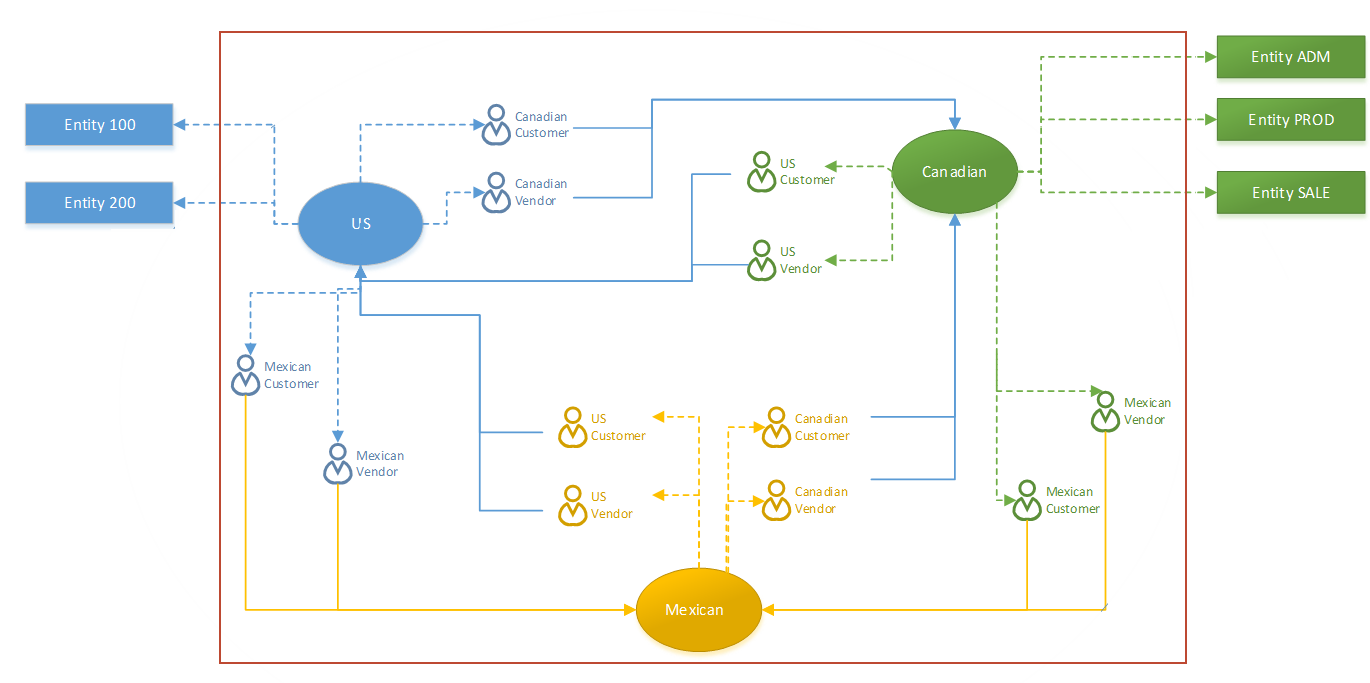In this article
Intercompany Suite: Overview
The Intercompany Suite functionality allows you to set up intercompany relationships and to define intercompany accounts (Due To and Due From) for separate companies for entities that use different local currencies and have different year-end cycles. The intercompany and Intercompany Suite functionality in Multi-Entity Management extends the standard intercompany functionality in Microsoft Dynamics 365 Business Central. For more information about the standard intercompany functionality in Microsoft Dynamics 365 Business Central, see the Microsoft documentation: Managing Intercompany Transactions![]() .
.
Intercompany Suite is a module within Multi-Entity Management (MEM). However, it can be purchased on its own without purchasing or using the full Multi-Entity Management functionality. For purchasing information, contact sales.
Company Variations
For companies that have purchased both Multi-Entity Management with the Intercompany Suite module, you can set up the following company variations. These different variations determine how to set up the Intercompany Suite functionality. Companies can also belong to different tenants or have different environments that belong within the same tenant.
| Multi-Entity Management Setup | |||
| Disable Multi-Entity Management | Enable Intercompany Suite | Description | |
| Company 1 | On | Off |
This company uses only the standard Microsoft Dynamics 365 Business Central functionality.
|
| Company 2 | Off | Off |
This company uses Multi-Entity Management only.
|
| Company 3 | Off | On | This company uses both Multi-Entity Management entity functionality and Intercompany Suite functionality. |
| Company 4 | On | On |
This company uses Intercompany Suite functionality only.
|
Example
To better understand the Intercompany Suite functionality, review the following example.
A major company has the following subsidiary companies with varying number of Multi-Entity Management entities:
- In the United States, Company1 with two entities (100 and 200) and some users (User1, User2)
- In Canada, Company2 with three entities (ADM, PROD, SALES) and some users (User3, User4)
- In Mexico, Company3 with no Multi-Entity Management entities and some users (User5, User6)
From time to time, financial transactions occur between the companies. With the Intercompany Suite functionality in Multi-Entity Management, transactions that use foreign currencies between the entities of the different companies in the United States and Canada (e.g., transactions between one entity from the Company1 and one entity from Company2). The following image shows how the three offices interact. The red outline indicates the standard Microsoft Dynamics 365 Business Central intercompany functionality, which works for transactions between the companies.

If usernames for the same user are different in different environments, then on the IC Suite User Mapping, the following mappings must be created:
| Company | User Mapping Code | Description | Map to User ID |
| Company1 | John_Doe | JohnDoe | |
| Company2 | John_Doe | JohnDoe2 | |
| Company3 | John_Doe | JDoe |
A user mapping record is not needed with Company3 (Mexico) because Company3 does not have any entities.
On the IC Suite Endpoints page, the following endpoints are created:
- Company1USA - Endpoint to connect to Company1 in the United States
- Company2CAN - Endpoint to connect to Company2 in Canada
On the IC Suite Partners, Company2 creates the following intercompany partners: USA and MEXICO
| Intercompany Partner | Setup | Account Setup |
| USA |
|
Due To/Due From accounts set up for the following entities:
|
| MEXICO |
|
Due To/Due From accounts set up as follows:
|